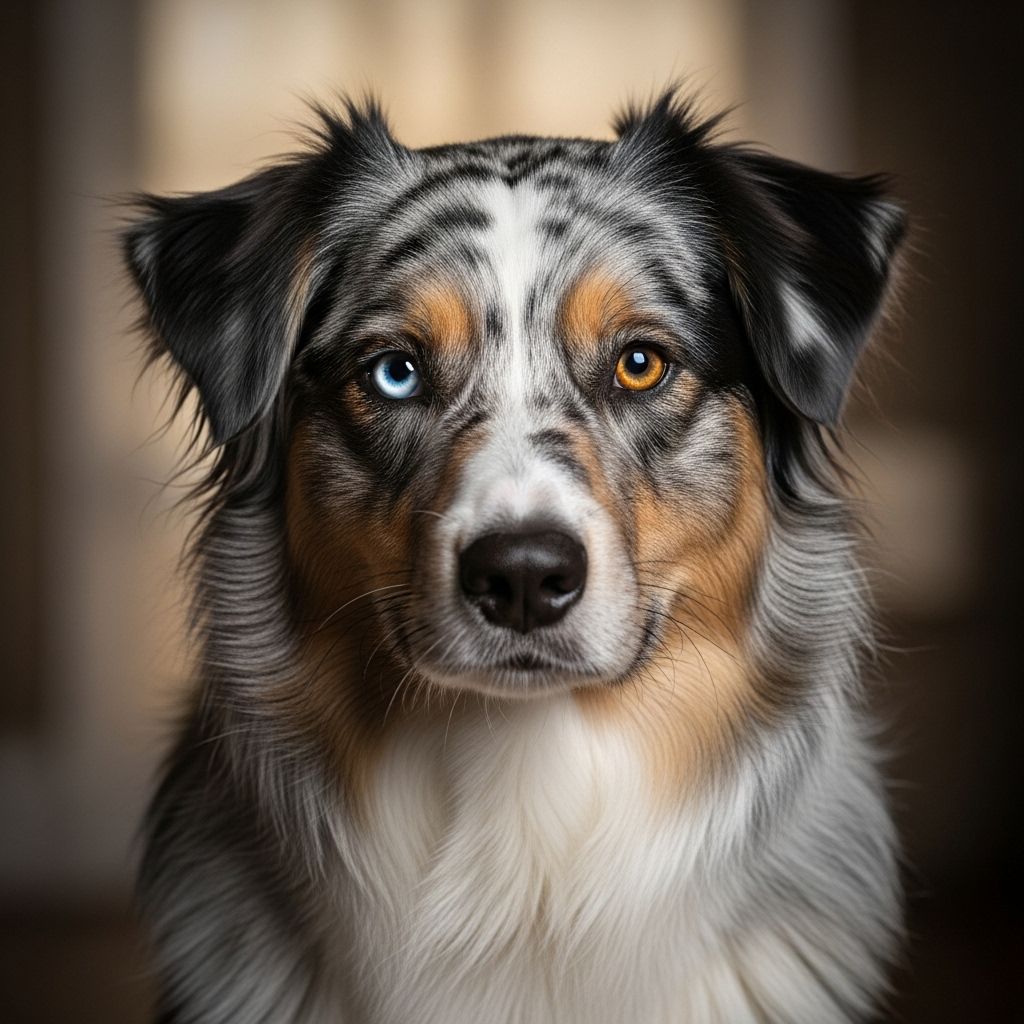Merle Dogs: Genetics, Breeds, and Considerations
Understanding gene mutation helps breeders prevent hearing and vision issues.

Image: HearthJunction Design Team
Introduction to Merle Dogs
Merle dogs are known for their distinctive coat pattern, which features a mottled mix of darker and lighter colors. This pattern is a result of a genetic variation that affects the dog’s coat color and can also influence eye color and other physical characteristics. In this article, we will explore the genetics behind the merle pattern, breeds that exhibit this trait, and important considerations for breeders and owners.
## Genetics of the Merle Pattern
The merle pattern is caused by a mutation in the SILV gene, which is responsible for the production of eumelanin, one of two types of melanin found in dogs. This mutation leads to a dilution of the eumelanin in random patches, creating the characteristic marbled effect. The merle gene is autosomal dominant with incomplete penetrance, meaning a dog only needs to inherit one copy of the mutated gene (M) to express the merle pattern (genotype *M/m*). The non-merle gene is denoted as *m* .
Key Points About Merle Genetics:
–
Dominant but Incomplete
: The merle gene is dominant but does not always fully express itself, leading to variations in how the pattern appears.–
Color and Pattern
: Merle affects eumelanin, meaning breeds with no eumelanin, such as recessive red dogs, won’t show the pattern visibly.–
Health Implications
: Dogs that inherit two copies of the merle gene (*M/M*) are at a higher risk of health issues, including deafness and vision problems.## Breeds That Exhibit the Merle Pattern
Merle dogs can be found in several breeds recognized by kennel clubs such as the AKC and the Kennel Club. Here are some of the most notable breeds:
|
Breed
|Description
||———–|—————–|
|
Australian Shepherd
| Known for their intelligence and versatility, merle Australian Shepherds are popular both as pets and working dogs. ||
Beauceron
| A French herding breed, Beaucerons with merle coats are robust and intelligent. ||
Border Collie
| One of the smartest dog breeds, merle Border Collies are highly trainable and energetic. ||
Dachshund
| Dachshunds with the dapple pattern (equivalent to merle) are small but lively companions. ||
Cardigan Welsh Corgi
| Merle Cardigan Corgis are recognized by the AKC and have a distinctive appearance with or without tan points. |## Health Considerations for Merle Dogs
Merle dogs can face health issues, particularly if they inherit two copies of the merle gene.
Health Risks:
–
Double Merle
: Dogs with two copies of the merle gene are more likely to be deaf or have vision impairments.–
Eye and Hearing Issues
: Single merle dogs may also experience these issues, although less frequently than double merles.–
Genetic Testing
: It is crucial for breeders to perform genetic testing to identify carriers of the merle gene and avoid breeding double merles. Best Practices for Breeders:
1.
Genetic Testing
: Always test breeding stock for the merle gene to ensure responsible breeding practices.2.
Health Checks
: Regular health checks for merle dogs are essential to monitor hearing and vision.3.
Avoid Double Merles
: Breeders should avoid breeding together two dogs that are both merle to prevent health complications.## FAQs
Q: What is the difference between a merle and a dapple dog?
A: The terms “merle” and “dapple” are often used interchangeably, but “merle” typically refers to larger breeds, while “dapple” is more common in smaller breeds like the Dachshund.
Q: Can any dog breed be merle?
A: No, not all breeds can exhibit the merle pattern. It is more common in breeds that have been recognized to carry the merle gene.
Q: How do I care for a merle dog’s health?
A: Regular veterinary check-ups, genetic testing before breeding, and monitoring for hearing or vision issues are crucial for maintaining the health of merle dogs.
## Conclusion
Merle dogs are admired for their unique coats and are found in various breeds. Understanding the genetics and health implications of the merle pattern is essential for responsible breeding and pet ownership. By recognizing the potential health risks and taking proactive measures, we can ensure these beautiful dogs live happy and healthy lives.
References
Read full bio of medha deb












